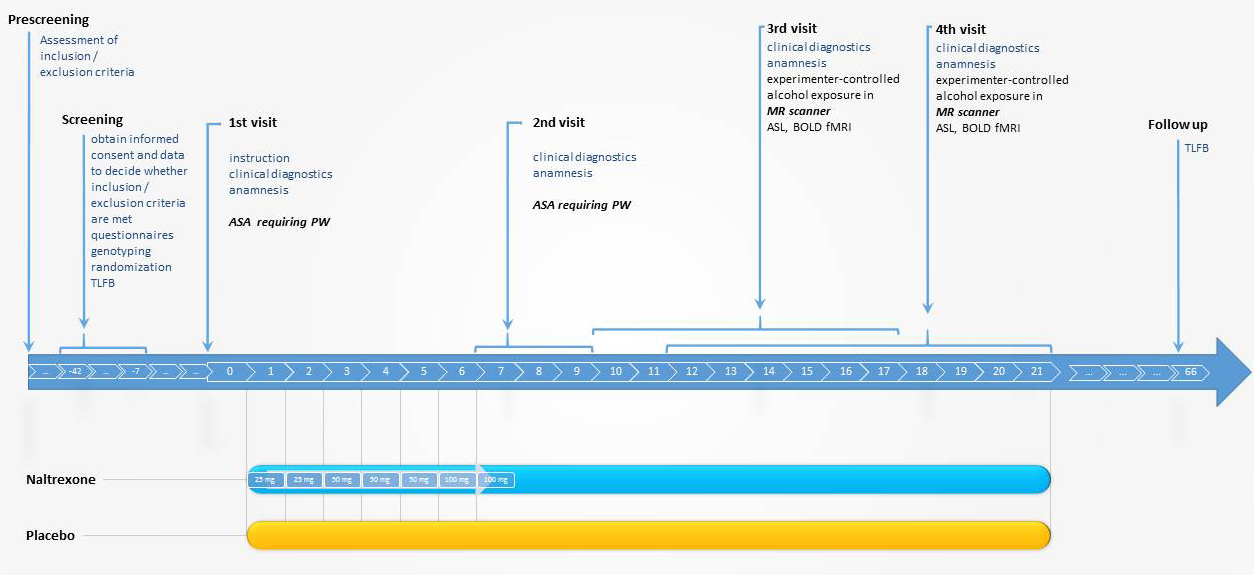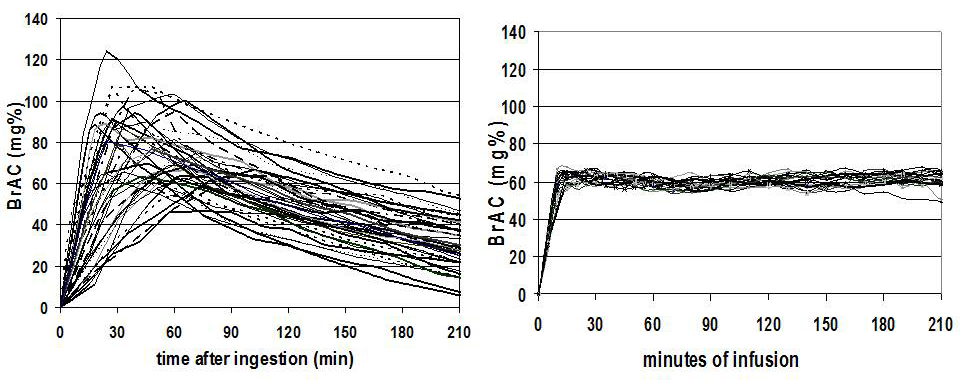SP 12
Platform for Experimental Human Tests
To help deciding which new potential anti-relapse drugs should to be tested in clinical trials, we will develop a human Test Platform for Medications in Alcoholism (TEMA), which quickly and affordably generates a first signal in humans. TEMA translates animal behavioral paradigms of alcohol self-administration (ASA) into corresponding human experiments.
In our ASA method alcohol is not ingested, but intravenously infused. This way of administration bears many advantages over oral ASA: (a) intravenous infusion bypasses the gastrointestinal system and enables for much better control of blood alcohol concentration (BAC), (b) blinding: using the intravenous route, alcohol can be administered without the subject’s awareness. Thus, infusion provides a reliable method for dissociating the response to alcohol administration from demand characteristics such as taste, smell, and familiarity/ preference of the source of the alcohol, (c) model-based infusion enables to choose a BAC safety limit


Figure 1: time-line-follow-back (TLFB); alcohol self administration (ASA); progressive work (PW); arterial spin labeling (ASL)
The TEMA includes an ASA paradigm requiring work according to a progressive schedule to make the next dose of ASA available, thus testing alcohol “wanting”, and experimenter-controlled alcohol infusion in a 3T-MR scanner using resting state fMRI and arterial spin labeling to assess drug effect on alcohol-induced neural activity in the ventral striatum.
First we will test the µ-opioid receptor antagonist naltrexone as a reference drug for validation. Drug treatment will follow a randomized, double-blind, placebo-controlled parallel-group design. Alcohol administration will be single-blind with respect to dose.
In the next steps, we will apply the TEMA to test new potential anti-relapse drugs.

Figure 2, left panel: Poor control of blood alcohol concentration (BAC) after oral administration despite standardized dosing and ingestion protocol of 1.0 g ethanol/liter total body water in 44 young males. Peak BAC ranged from 48 to 124 mg% (mean=80.5 ± SD=18.3); latency to peak BAC from 18 to 102 min (mean=49.2 ± SD=23.7). Right panel: Good control of the prescribed time course of BAC using model-based alcohol infusion methods in 48 subjects. The standard deviation from the target (60 mg%) was less than 3 mg% at all times.



